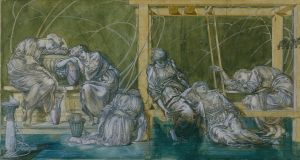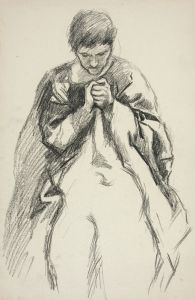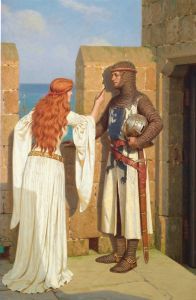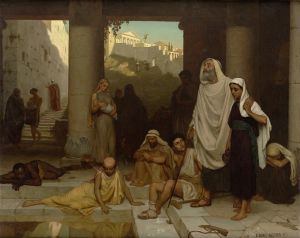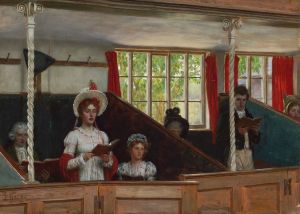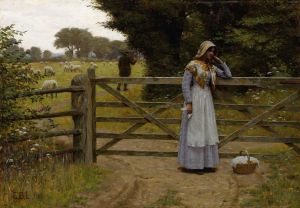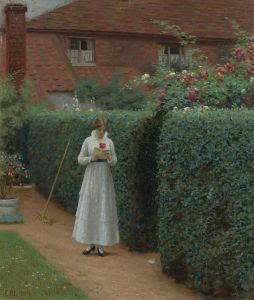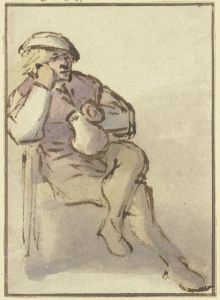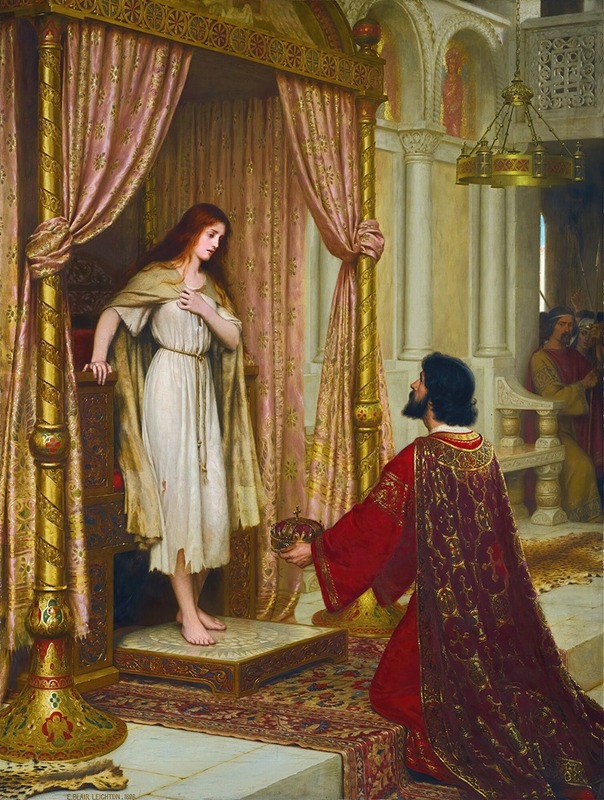
A King And A Beggar Maid
A hand-painted replica of Edmund Blair Leighton’s masterpiece A King And A Beggar Maid, meticulously crafted by professional artists to capture the true essence of the original. Each piece is created with museum-quality canvas and rare mineral pigments, carefully painted by experienced artists with delicate brushstrokes and rich, layered colors to perfectly recreate the texture of the original artwork. Unlike machine-printed reproductions, this hand-painted version brings the painting to life, infused with the artist’s emotions and skill in every stroke. Whether for personal collection or home decoration, it instantly elevates the artistic atmosphere of any space.
"A King and a Beggar Maid" is a painting by the British artist Edmund Blair Leighton, who was known for his historical and romantic genre paintings. Leighton, born in 1852 and active until his death in 1922, was part of the late Pre-Raphaelite movement, which sought to return to the detail, intense colors, and complex compositions of early Renaissance art.
The painting "A King and a Beggar Maid" was completed in 1898. It depicts a scene from the legend of King Cophetua, a tale that has been popular in literature and art for centuries. According to the legend, King Cophetua was an African king who had no interest in women until he saw a beggar maid named Penelophon. Struck by her beauty and grace, he fell in love with her and decided to marry her, despite their vastly different social statuses. This story has been interpreted as a romantic ideal of love transcending social boundaries.
Leighton's painting captures the moment when King Cophetua first sees the beggar maid. The composition is carefully arranged to highlight the contrast between the two figures. The king is depicted in regal attire, with rich, elaborate clothing that signifies his royal status. In contrast, the beggar maid is dressed in simple, tattered clothing, emphasizing her humble origins. The background of the painting features architectural elements that suggest a palace or a grand setting, further highlighting the disparity between the two characters.
Leighton's attention to detail is evident in the intricate patterns and textures of the fabrics, the delicate rendering of the figures' expressions, and the overall composition of the scene. The use of light and shadow adds depth and drama to the painting, drawing the viewer's eye to the central figures and their interaction.
"A King and a Beggar Maid" is a prime example of Leighton's ability to combine historical and romantic themes with technical precision. His work often explored themes of chivalry, romance, and medieval life, and this painting is no exception. It reflects the Victorian fascination with medievalism and the idealization of courtly love.
The painting is held in a private collection, and as such, it is not on permanent public display. However, it has been exhibited in various art galleries and exhibitions, allowing the public to appreciate Leighton's craftsmanship and his interpretation of this timeless legend.
Edmund Blair Leighton's work, including "A King and a Beggar Maid," continues to be celebrated for its beauty, technical skill, and romanticism. His paintings remain popular among collectors and art enthusiasts, and they are frequently reproduced in prints and art books.





